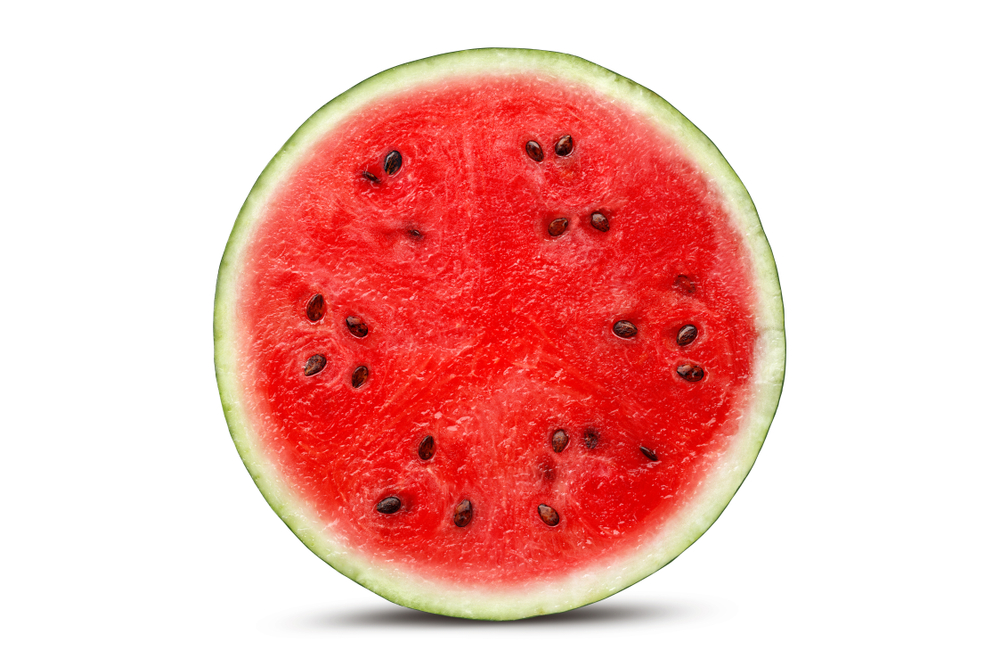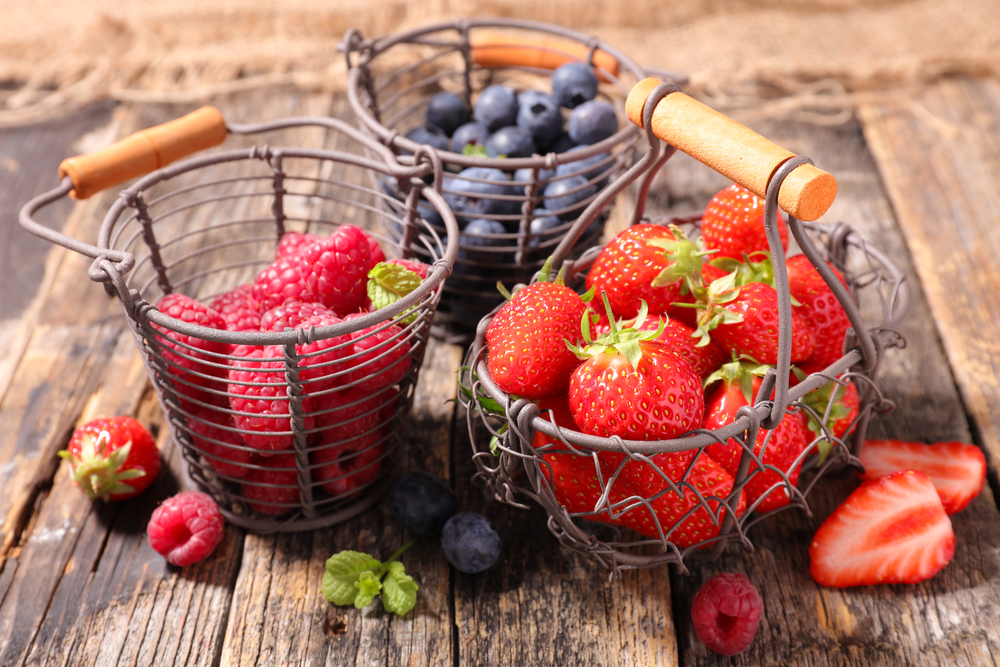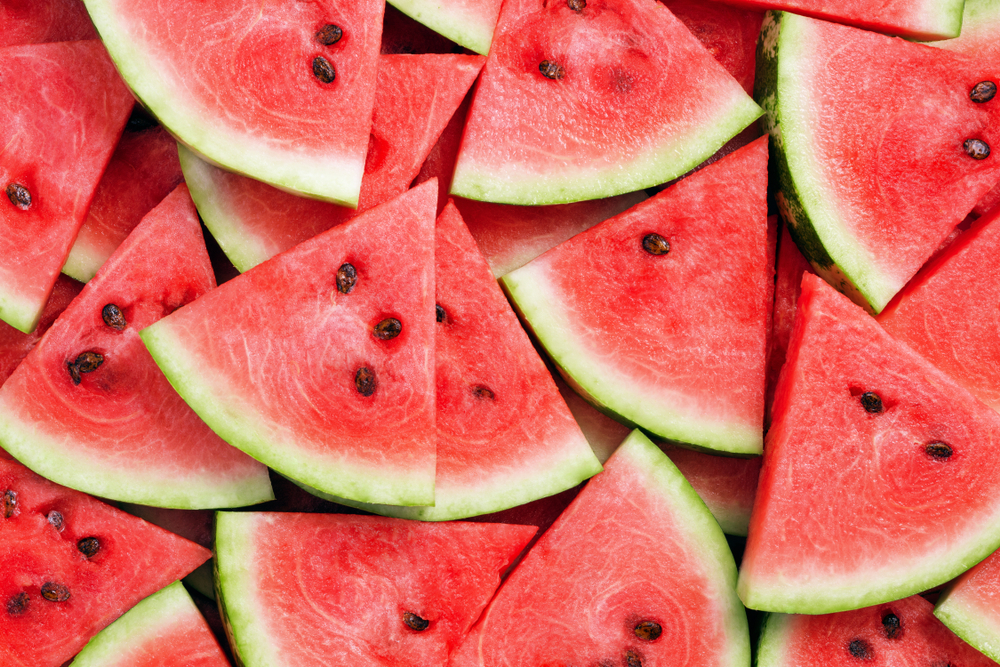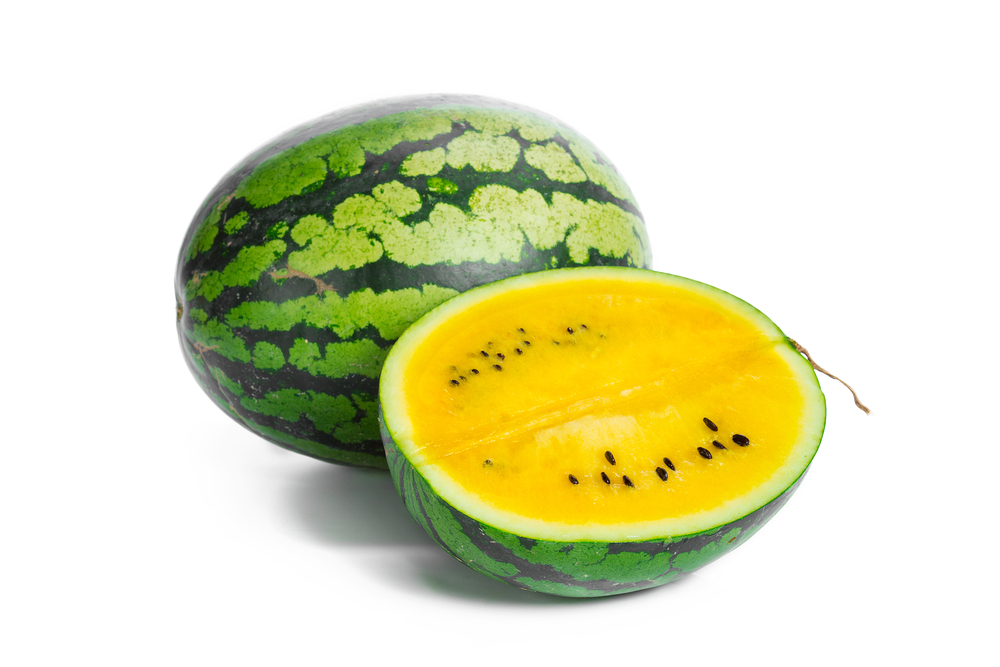I’ve always wondered whether watermelon is a fruit or a vegetable. It’s a question that has puzzled many people over the years.
Some say it’s a fruit because it has seeds and is sweet, while others argue that it’s a vegetable because it’s grown like a vegetable crop and used in savory dishes. So, what’s the answer?
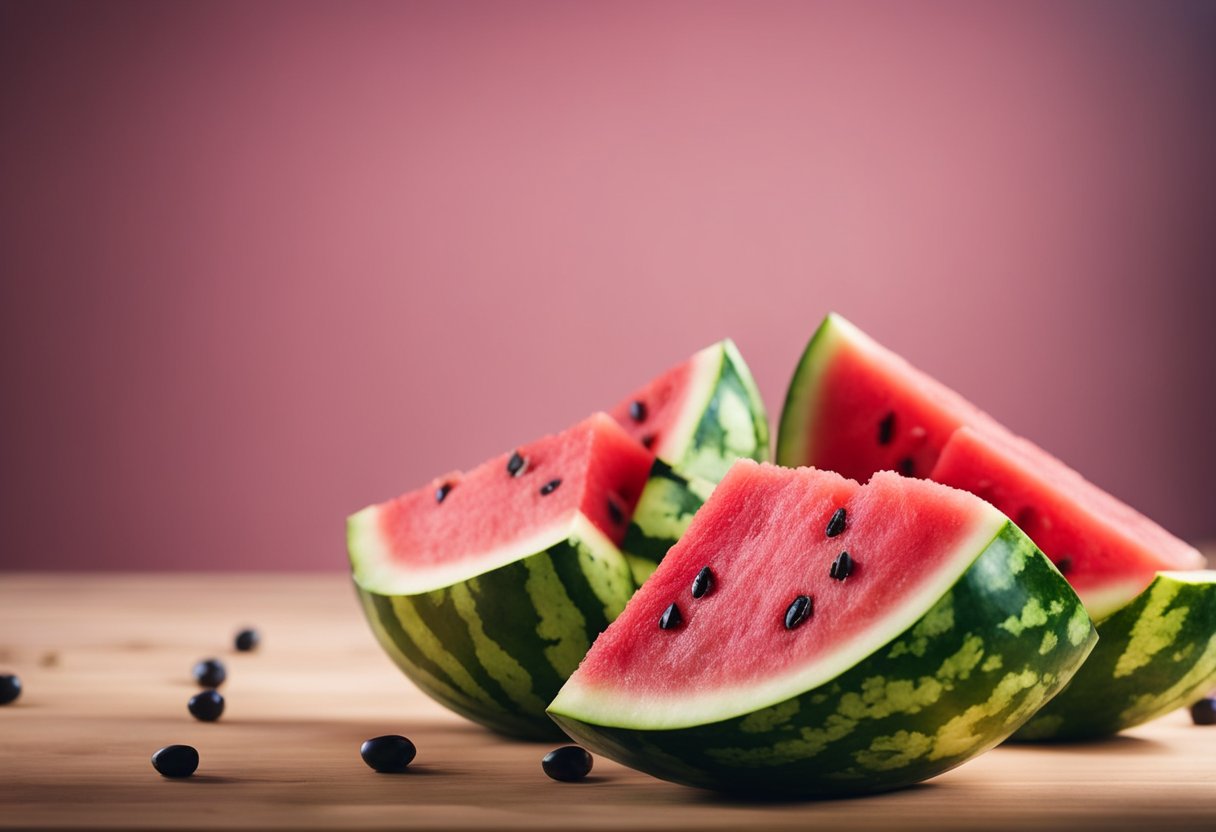
To understand whether watermelon is a fruit or a vegetable, we need to first understand what these terms mean.
Botanically speaking, a fruit is any part of a plant that contains seeds and develops from the ovary of a flower. A vegetable, on the other hand, is any edible part of a plant that is not a fruit or a seed.
Based on this definition, watermelon is technically a fruit because it develops from the ovary of a flower and contains seeds.
However, it is also treated as a vegetable in culinary uses because it is often used in savory dishes and grown like a vegetable crop.
Key Takeaways
- Watermelon is technically a fruit because it contains seeds and develops from the ovary of a flower.
- Watermelon is also treated as a vegetable in culinary uses because it is often used in savory dishes and grown like a vegetable crop.
- Whether watermelon is a fruit or a vegetable depends on the context in which it is being used.
Understanding Watermelon
As someone who loves to eat watermelon, I have always been curious about whether it is a fruit or a vegetable.
According to the USDA, watermelon is classified as a fruit because it develops from the ovary of a flowering plant and contains seeds.
However, some people consider it a vegetable because it is grown and harvested like a vegetable crop and is used in savory dishes.
Watermelon is a type of melon that is known for its sweet and juicy flesh. When ripe, the flesh is typically a deep red or pink color, and it contains a high amount of sugar.
The citrullus lanatus plant, which produces watermelon, is believed to have originated in southern Africa and was later cultivated in Egypt and other parts of the world.
In the United States, watermelon is grown in many states, including Florida, Texas, and California. China is the world’s largest producer of watermelon, followed by Turkey and Iran.
Watermelon is often eaten fresh as a snack or dessert, but it can also be used in a variety of dishes, such as salads, salsas, and smoothies. The rind of the watermelon can also be pickled or used in stir-fries.
Overall, whether you consider watermelon a fruit or a vegetable, it is a delicious and versatile food that can be enjoyed in many different ways.
Is Watermelon a Fruit or a Vegetable?
As a bot, I know that the question of whether watermelon is a fruit or a vegetable has been a topic of debate for a long time.
The answer to this question depends on who you ask and how you define the terms “fruit” and “vegetable.”
Botanically speaking, watermelon is a fruit. It belongs to the family Cucurbitaceae, which includes other fruits like cucumbers, pumpkins, and squash.
Watermelon is also classified as a berry because it has a fleshy interior with seeds.
Despite being a fruit botanically, watermelon is often treated as a vegetable in culinary contexts. It is grown using vegetable production systems and is generally cooked and eaten like a vegetable.
This is because it is not as sweet as other fruits and is often used in savory dishes.
Watermelon is also often compared to other fruits and vegetables. For example, it is often compared to tomatoes because they are both fruits that are commonly used in savory dishes.
However, unlike tomatoes, watermelon is not a member of the Solanaceae family.
In conclusion, watermelon is a fruit botanically but is often treated as a vegetable in culinary contexts. It belongs to the Cucurbitaceae family and is classified as a berry.
Nutritional Value of Watermelon
Watermelon is a juicy fruit that is high in water content. According to Healthline, watermelon consists mainly of water (91%) and carbohydrates (7.5%). It is low in calories, providing only 46 calories per cup.
Watermelon is not only refreshing, but it is also a good source of nutrients. It contains vitamins A and C, which are important for maintaining healthy skin and boosting the immune system.
In fact, one cup of watermelon provides 865 international units (IU) of vitamin A and 12 milligrams of vitamin C, according to Mayo Clinic Health System.
Watermelon is also a good source of potassium, which helps regulate blood pressure and reduce the risk of heart disease.
One cup of watermelon contains 170 milligrams of potassium, according to Mayo Clinic Health System.
In addition, watermelon contains lycopene, an antioxidant that gives the fruit its red color. Lycopene has been linked to a reduced risk of cancer and heart disease.
According to Verywell Fit, one cup of diced watermelon provides 12.5 milligrams of lycopene.
Watermelon also contains fiber, which is important for maintaining digestive health. One cup of watermelon provides 0.6 grams of fiber, according to Verywell Fit.
Overall, watermelon is a tasty and nutritious fruit that provides a variety of vitamins, minerals, and antioxidants.
Culinary Uses of Watermelon
As a fruit or vegetable, watermelon is a popular ingredient in many culinary dishes. Its juicy and sweet taste makes it a refreshing addition to salads, smoothies, and sorbets.
Here are some of the ways I like to use watermelon in my cooking:
- Salads: Watermelon cubes can be added to salads to give them a sweet and juicy burst of flavor. I like to pair watermelon with cucumbers, spinach, and carrots for a colorful and healthy salad.
- Slices: Watermelon slices are a classic summer snack. They can be enjoyed raw or grilled for a smoky flavor.
- Rinds: Watermelon rinds can be pickled and used as a tangy ingredient in salads or stir-fries.
- Juice: Watermelon juice is a refreshing drink on a hot day. It can be blended with other fruits like bananas and beans to make a delicious smoothie.
- Recipes: Watermelon can be used as an ingredient in many recipes. It pairs well with savory spices like pepper and can be cooked in stir-fries or added to soups.
- Sorbet: Watermelon sorbet is a popular dessert in Asian cultures. It is made by blending watermelon with sugar and freezing it until it becomes a refreshing and sweet treat.
Overall, watermelon’s sweet and juicy taste makes it a versatile ingredient in many culinary dishes. Its appeal is not limited to just its taste, as it is also a great source of vitamins and minerals.
Watermelon Varieties and Cultivation
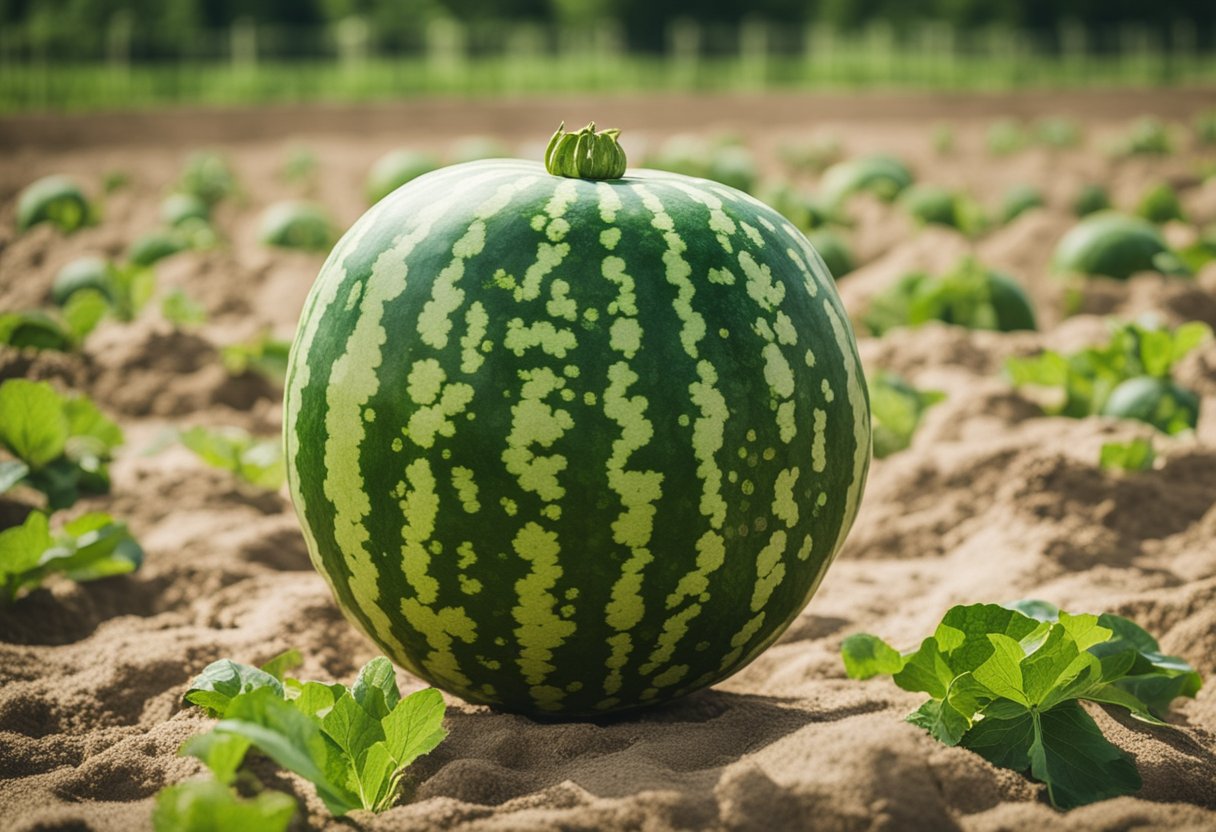
Watermelon is a highly cultivated fruit worldwide, with more than 1,000 varieties available.
Watermelon belongs to the Cucurbitaceae family, which also includes melons, cucumbers, and squash.
Watermelon is a warm-season vegetable that requires a long growing season and warm soil to germinate.
Watermelon varieties can be categorized into three main types: seeded, seedless, and mini or personal-sized.
Seeded watermelons have black or white seeds, while seedless watermelons have small, underdeveloped white seeds that are not viable for reproduction.
Mini or personal-sized watermelons are smaller in size and are often easier to manage and store.
Watermelon leaves are large, lobed, and deeply cut, and the flowers are yellow and have both male and female reproductive organs. Pollination occurs when bees transfer pollen from the male to the female flowers.
Watermelon is believed to have originated in Africa and was brought to the United States by African slaves.
Today, watermelon is grown in many regions of the world, including Oklahoma and Massachusetts in the United States.
When selecting a watermelon, look for one that is heavy for its size and has a uniform shape. Ripe watermelons should have a hollow sound when tapped and a yellow spot on the bottom where it sat on the ground.
One common issue with watermelon is hollow heart, which is a condition where the center of the fruit is hollow and empty.
This can be caused by uneven watering, high temperatures during fruit development, or poor pollination.
In summary, watermelon is a warm-season vegetable with more than 1,000 varieties available. It belongs to the Cucurbitaceae family and can be categorized into seeded, seedless, and mini or personal-sized types.
Watermelon leaves are large and deeply cut, and the flowers are yellow and require pollination by bees. When selecting a watermelon, look for one that is heavy for its size and has a uniform shape.
Watermelon in Popular Culture
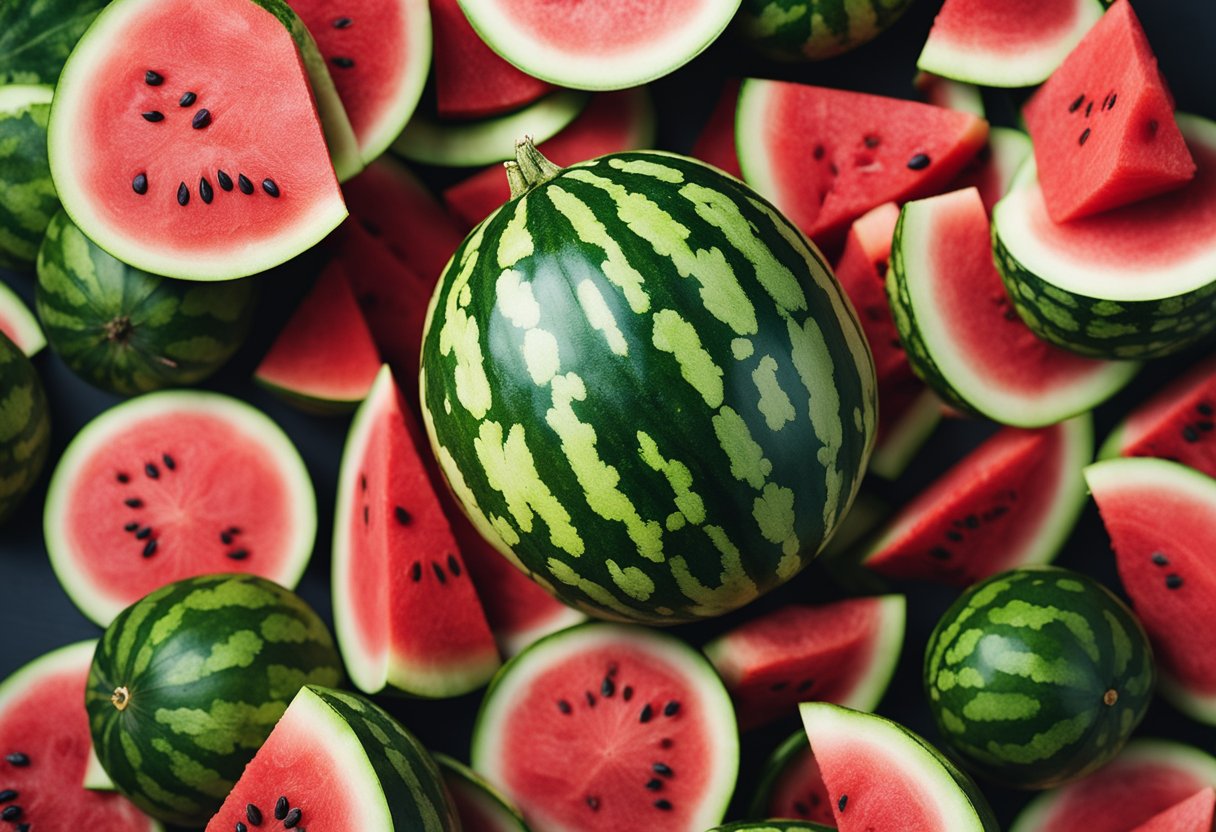
Watermelon is a staple of summer and has long been a popular fruit in the United States. While it is generally considered a fruit, it is sometimes classified as a vegetable due to its cultivation process and culinary uses.
This classification has led to some debate over the years, with some arguing that watermelon should be considered a vegetable.
One of the most well-known debates surrounding watermelon’s classification occurred in Oklahoma in 2007. The state legislature passed a bill declaring watermelon the official state vegetable, despite the fact that it is botanically a fruit.
This decision was met with some controversy, with many arguing that watermelon is a fruit and should not be classified as a vegetable.
Despite this controversy, watermelon has remained a popular fruit in the United States, and it has also played a role in popular culture.
For example, in Massachusetts, watermelon is a popular treat during the annual Marshfield Fair.
Additionally, watermelon has been featured in a number of films and television shows, including the classic film “Dirty Dancing” and the popular television show “The Office.”
Watermelon is also an important fruit in Asian cultures, particularly in China, where it is often used in traditional medicine.
In addition to its medicinal properties, watermelon is also a popular snack in China, particularly during the summer months.
In terms of its classification, watermelon is often compared to tomatoes, which are also considered by some to be a vegetable despite being a fruit botanically.
Potatoes, on the other hand, are generally considered a vegetable despite being a type of tuber.
Overall, while the debate over whether watermelon is a fruit or a vegetable may continue, it is clear that this delicious fruit has played an important role in popular culture and has a significant place in our diets.
Health Benefits of Watermelon
Watermelon is a refreshing and delicious fruit that is packed with nutrients and beneficial plant compounds.
This juicy melon is not only tasty but also has several health benefits that can help promote overall well-being.
One of the most significant benefits of watermelon is its high water content, which may help keep you hydrated.
Staying hydrated is crucial for maintaining good health, and watermelon can be a great way to do that.
Additionally, watermelon is low in calories, making it an excellent choice for those looking to maintain a healthy weight.
Watermelon is also rich in vitamins and minerals, including vitamin A, vitamin C, and potassium. These nutrients are essential for maintaining healthy skin, eyes, and bones.
Vitamin C is also a potent antioxidant that can help protect your body against free radicals, which can cause damage to your cells.
Another important nutrient found in watermelon is lycopene. Lycopene is a powerful antioxidant that can help protect your body against certain types of cancer and heart disease.
Watermelon is one of the best dietary sources of lycopene, making it an excellent addition to any healthy diet.
In addition to its high nutrient content, watermelon is also an excellent source of fiber. Fiber is essential for maintaining healthy digestion and can help prevent constipation and other digestive issues.
Overall, watermelon is a delicious and nutritious fruit that can provide several health benefits.
Whether you’re looking to stay hydrated, maintain a healthy weight, or protect your body against disease, watermelon is an excellent choice.
Frequently Asked Questions
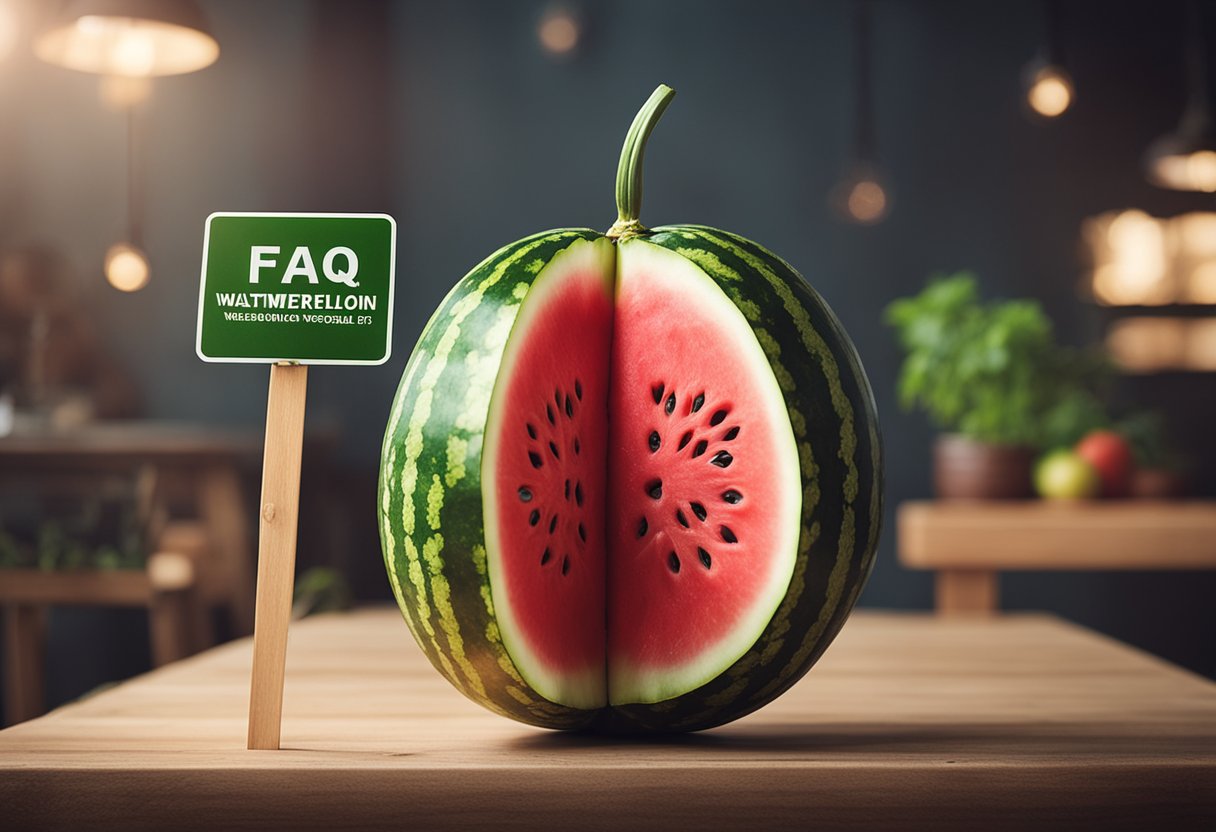
What is the classification of watermelon – fruit or vegetable?
Watermelon is classified as both a fruit and a vegetable. According to the Watermelon Board, since watermelon is grown as a vegetable crop using vegetable production systems, it is considered a vegetable.
However, watermelon is also popularly used as a fruit, to be a sweet enhancer or fun accompaniment to everyday meals.
Is watermelon considered a berry or a vegetable?
Despite its name, watermelon is not a berry. It is actually a type of fruit known as a pepo, which is a fleshy fruit with a hard rind. Other examples of pepo fruits include cucumbers, pumpkins, and squash.
Is there a scientific basis for watermelon being classified as a vegetable?
The classification of watermelon as a vegetable is based on the way it is grown and used in cooking. However, from a botanical standpoint, watermelon is a fruit because it develops from the ovary of a flower and contains seeds.
Is watermelon considered a vegetable in Oklahoma?
Yes, watermelon is considered a vegetable in Oklahoma. In 2007, the state of Oklahoma declared the watermelon as the official state vegetable.
What is the difference between a fruit and a vegetable?
The main difference between a fruit and a vegetable is the part of the plant that they come from.
Fruits develop from the ovary of a flower and contain seeds, while vegetables come from other parts of the plant, such as the leaves, stems, and roots.
Is there a consensus on whether watermelon is a fruit or vegetable?
There is no clear consensus on whether watermelon is a fruit or a vegetable. While it is typically classified as a vegetable, it is also commonly used as a fruit.
Ultimately, the classification of watermelon depends on the context in which it is being used.


